The countdown for Apollo 13, the planned third Moon landing mission aiming for a pinpoint touchdown in the Fra Mauro highlands, continued smoothly toward the April 11, 1970, liftoff from Kennedy Space Center’s (KSC) Launch Pad 39A. Two days before launch, however, mission managers decided to replace prime Command Module Pilot (CMP) Thomas K. “Ken” Mattingly with his backup John L. “Jack” Swigert because Mattingly had been exposed to German measles, to which he had no natural immunity. Backup Lunar Module Pilot (LMP) Charles M. Duke contracted the rubella virus that causes German measles from his son’s three-year-old friend, thereby exposing the rest of the crew. Prime crew Commander James A. Lovell and LMP Fred W. Haise as well as backup Commander John W. Young and CMP Swigert all had natural immunity to the disease. Swigert completed several days of last minute refresher training and integrated well with Lovell and Haise as the new crew of Apollo 13.
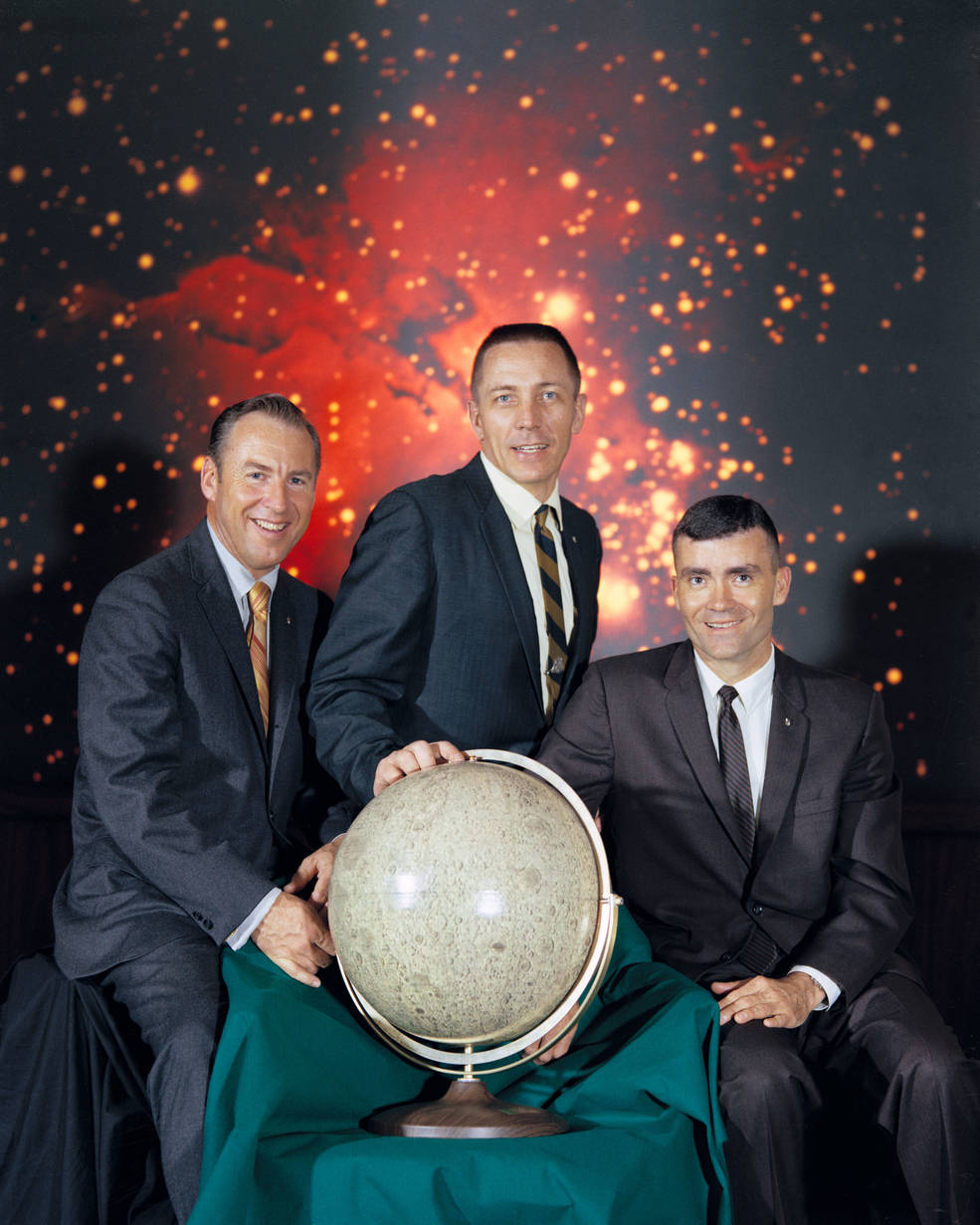
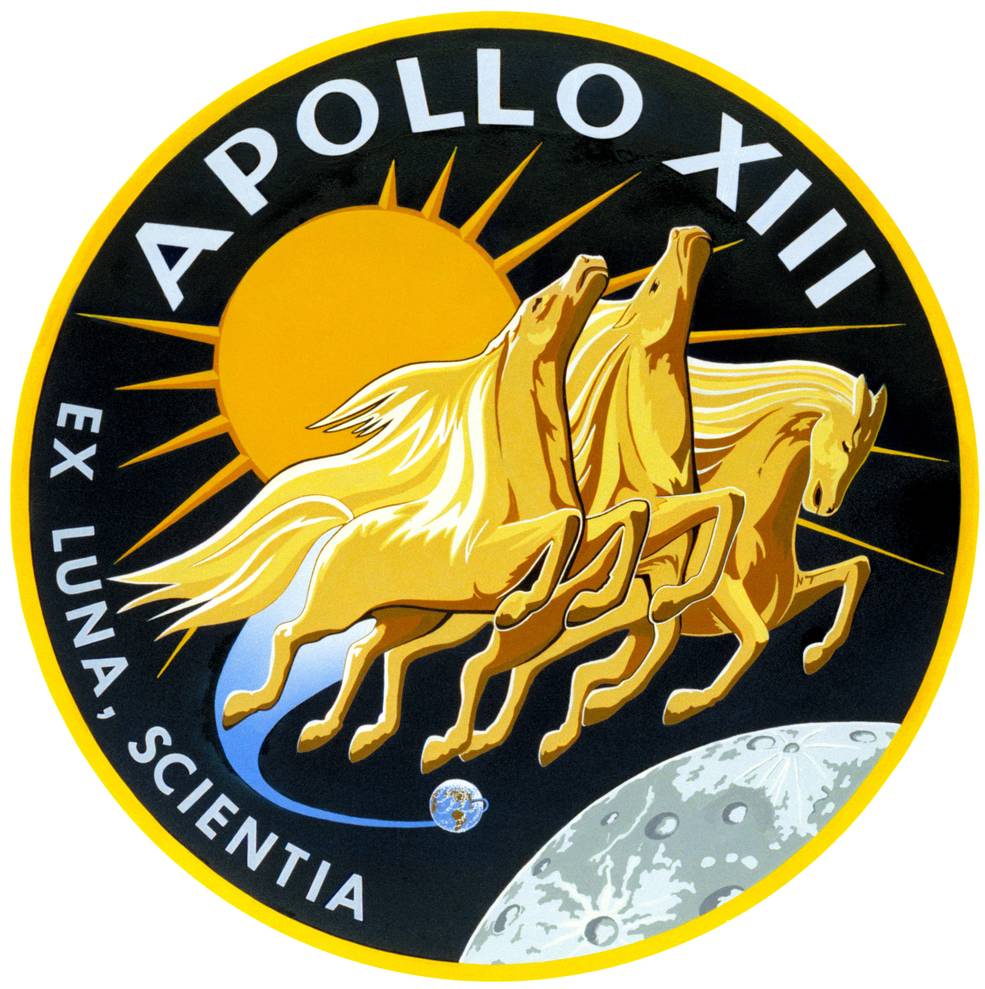
Left: Apollo 13 crew of (left to right) Lovell, Swigert and Haise – the
photograph was actually taken after the flight due to the late replacement
of Mattingly with Swigert. Right: The Apollo 13 crew patch with the motto
indicating the increased emphasis on science.
Sticking to tradition, in the crew quarters area of KSC’s Manned Spacecraft Operations Building, Chief of the Astronaut Office Thomas P. Stafford woke the crew shortly before 9 AM on launch morning. After brief physicals, Lovell, Swigert and Haise headed for the traditional prelaunch steak-and-eggs breakfast. From there, the trio moved on to the suiting up area where technicians helped them don their A7L Extravehicular Mobility Unit (EMU) spacesuits. They boarded the transfer van to take the 8-mile trip to the launch pad where they took the elevator up to the 320-foot level of the Launch Umbilical Tower. They crossed over to the White Room, where the pad close-out team led by Guenther F. Wendt assisted the astronauts with boarding their Command Module (CM) Odyssey, first Lovell to position himself in the left hand couch, then Haise into the right hand couch and finally Swigert to take the middle position. Less than two and a half hours before liftoff, all three crewmen were inside the capsule and began their prelaunch checklists as the pad close-out crew closed the spacecraft’s hatch for flight.
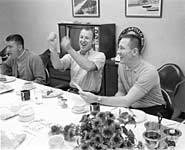
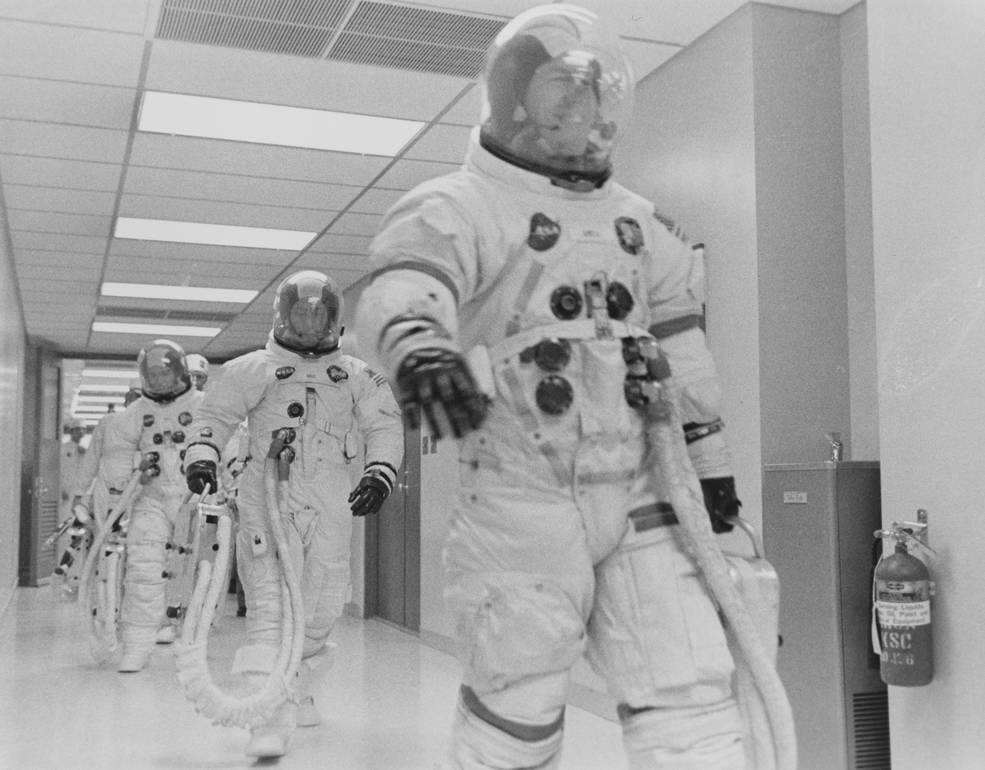
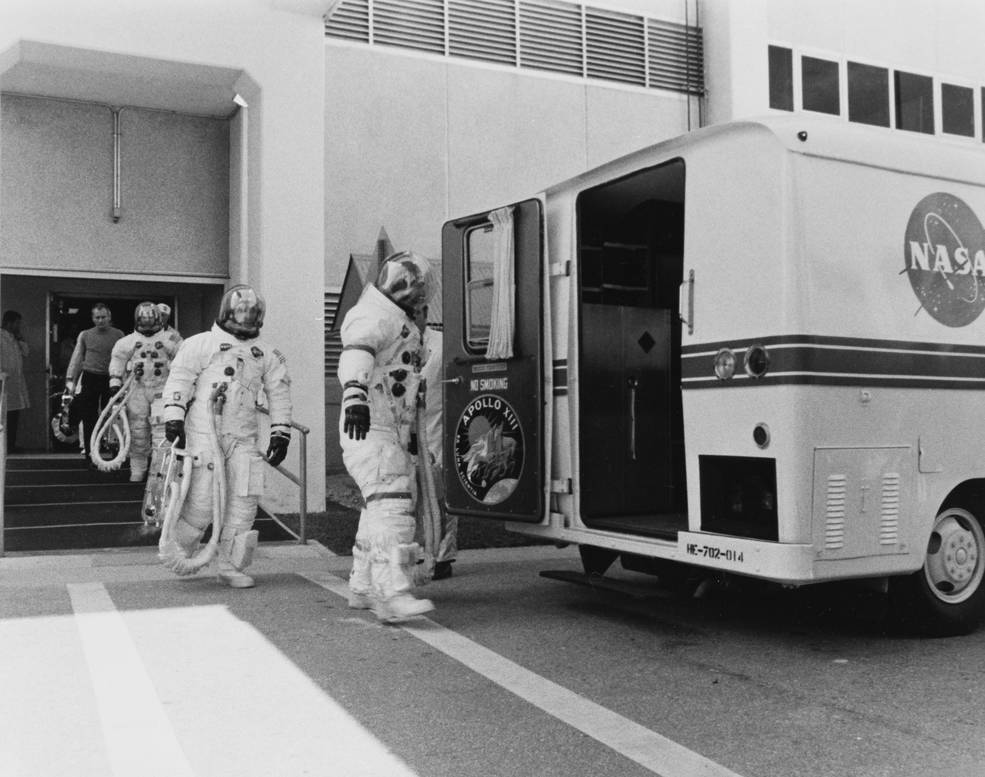
Left: Apollo 13 astronauts (left to right) Haise, Lovell and Swigert during the traditional pre-launch breakfast. Middle: Suited up, Apollo 13 astronauts (front to back) Lovell, Swigert and Haise walk toward the transfer van. Right: Apollo 13 astronauts (front to back) Lovell, Swigert and Haise board the transfer van for the ride to the launch pad.
Engineers in Firing Room 1 of the Launch Control Center (LCC) continued to monitor the countdown, which proceeded without incident. NASA Administrator Thomas O. Payne and Kurt H. Debus, KSC Director, hosted Vice President Spiro T. Agnew and Willy Brandt, Chancellor of the Federal Republic of Germany (West Germany), in the LCC to view the launch. The weather, which caused such a problem during the launch of Apollo 12 the previous November, continued to be favorable for Apollo 13’s liftoff and for the approximately 100,000 spectators who waited on nearby beaches to see the launch.
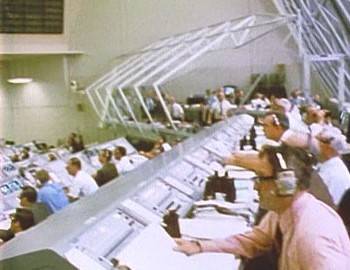
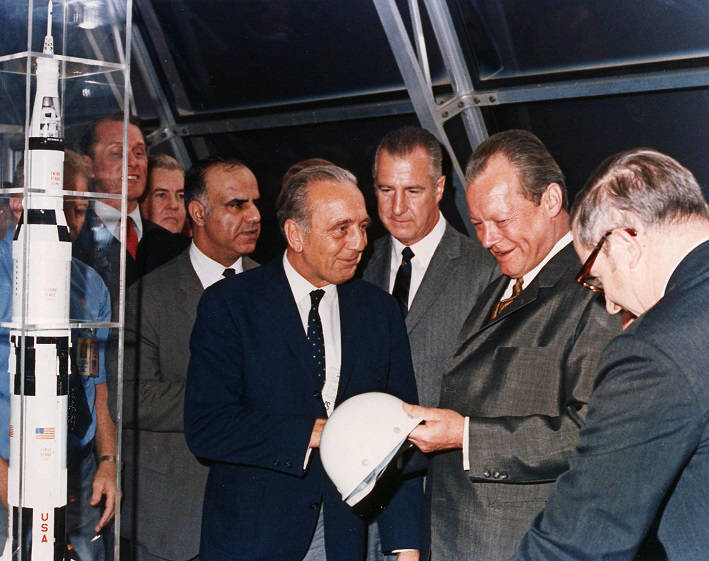
Left: Controllers in Firing Room 1 of the LCC monitor the countdown of Apollo 13. Right: West German Chancellor Brandt accepting a hard hat from KSC Director Debus as Vice President Agnew (behind the two men) and NASA Administrator Payne (at right) look on.
Lift off came precisely at 2:13 PM EST on April 11, 1970. Engineers in Firing Room 1 handed over control of the flight to the Mission Control Center (MCC) at the Manned Spacecraft Center (MSC), now the Johnson Space Center in Houston, as soon as the rocket cleared the launch tower. Fully fueled, the Apollo 13 Saturn V was the heaviest space vehicle yet. At 6,501,733 pounds, about 25,600 pounds heavier than Apollo 12, and with the thrust of Apollo 13’s first stage engines rated about 100,000 pounds lower in performance although still within specifications, it took the Saturn V between one half and three quarters of a second longer to clear the tower. In MCC, the Maroon Team led by Lead Flight Director Milton L. Windler took over control of the mission. The Capcom, or capsule communicator, the astronaut in MCC who spoke directly with the crew, during launch was Joseph P. Kerwin. Sitting beside Kerwin at the Capcom console was Mattingly who had flown back from Florida after being grounded. When he entered the control room, Windler greeted him saying, “Sorry to see you here, Ken.”
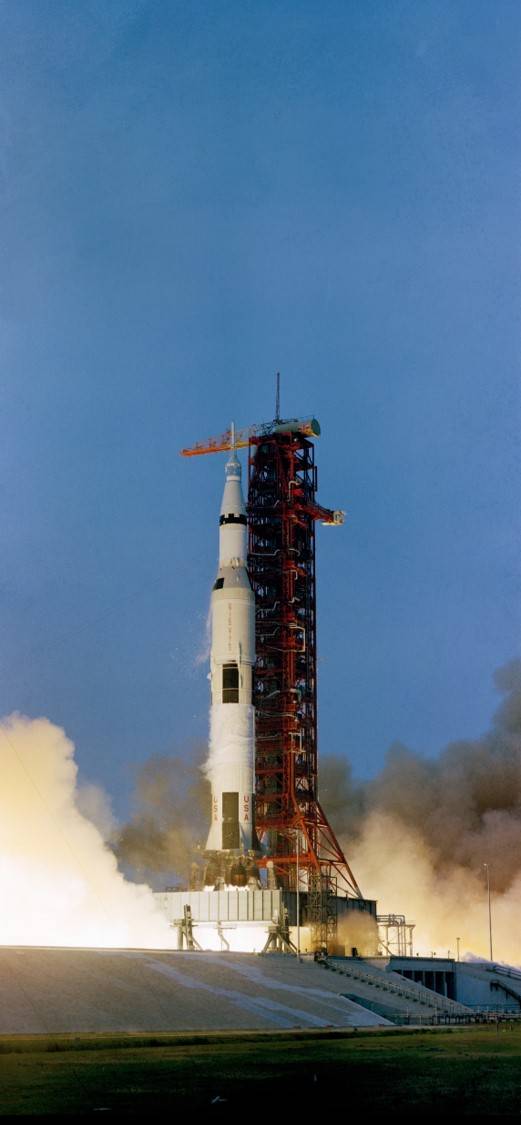
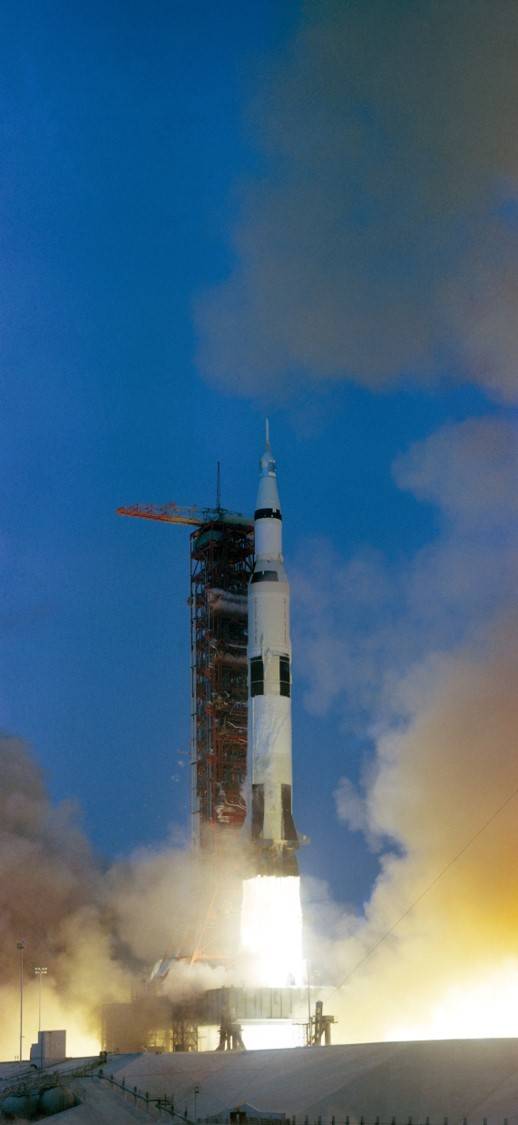
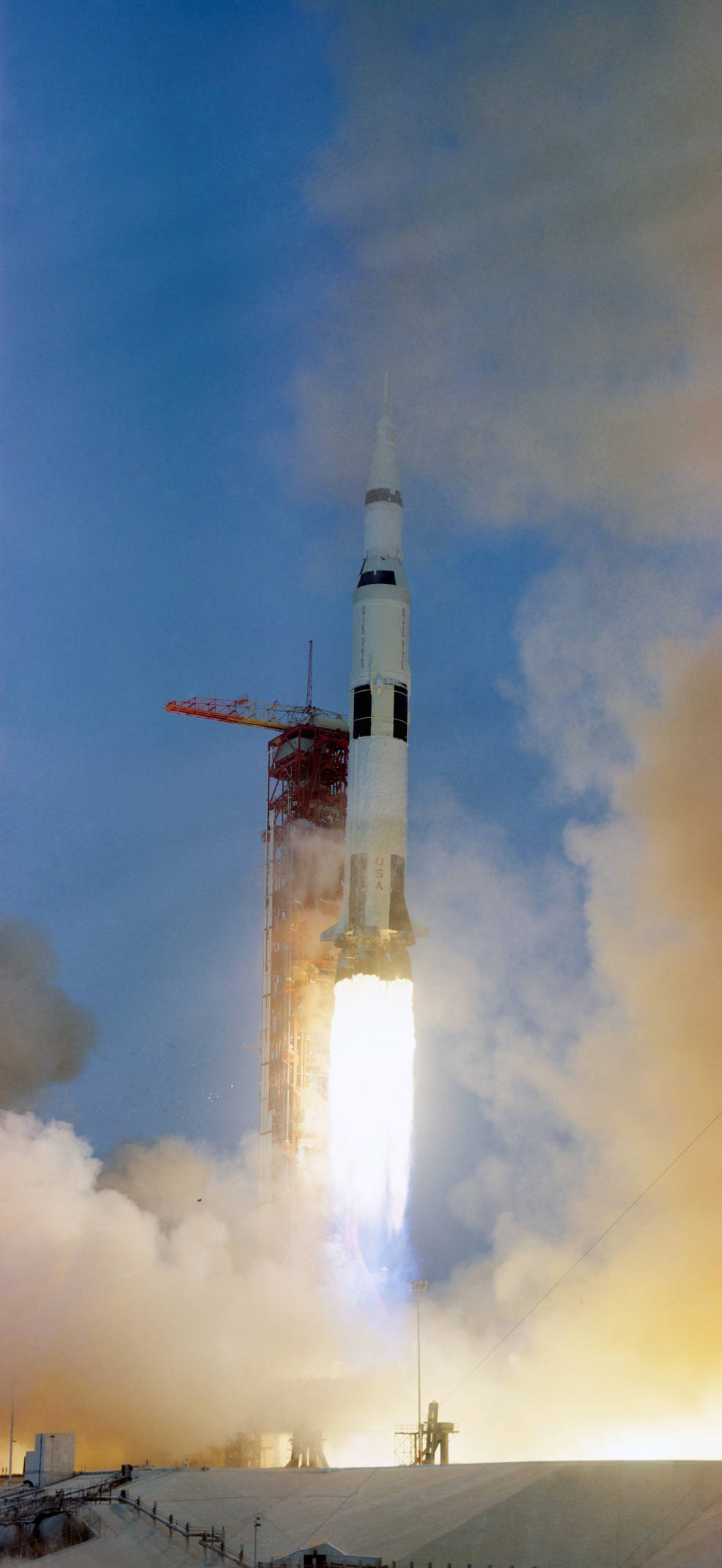
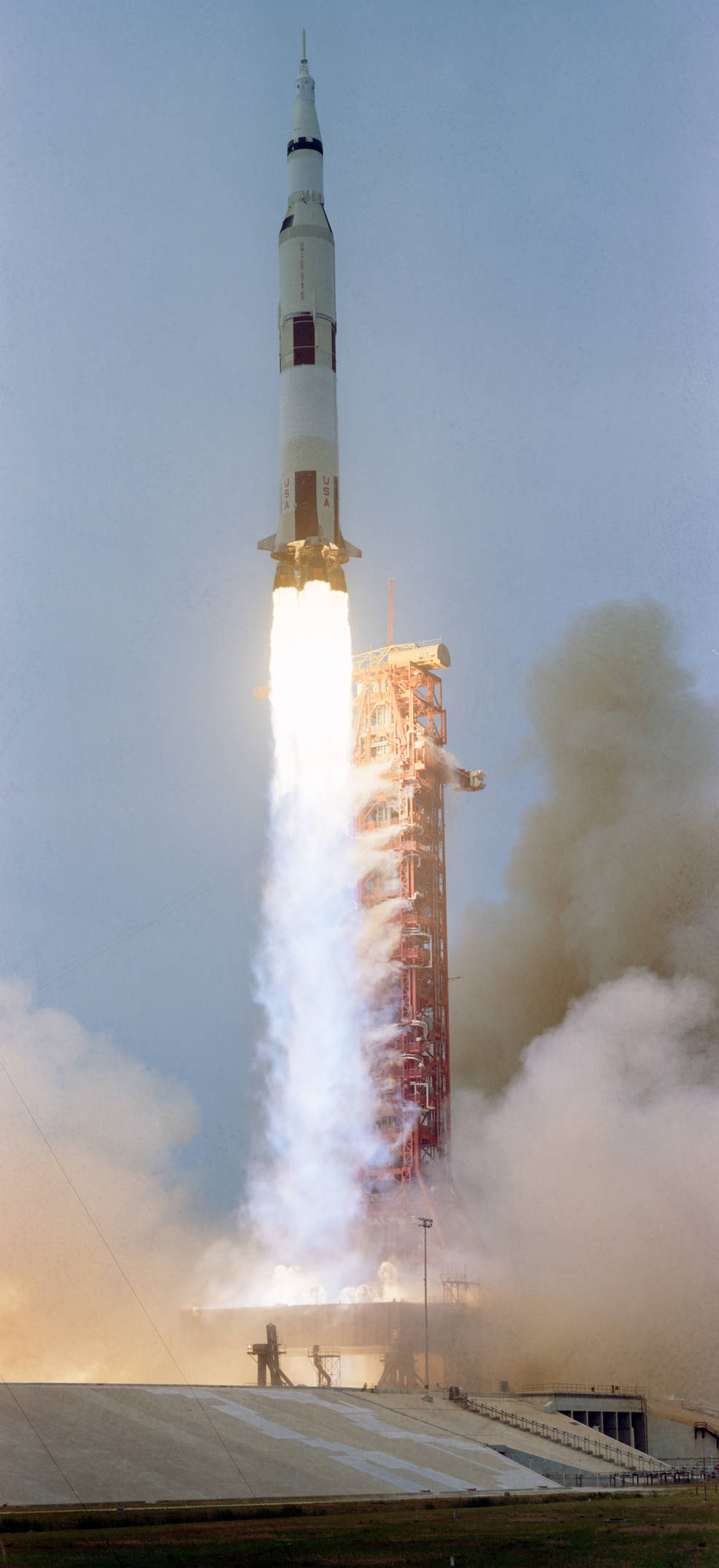
Sequence of photographs of the launch of Apollo 13.
Two minutes and 40 seconds after liftoff and at an altitude of about 42 miles, the Saturn V’s first stage shut off as planned and the now empty stage was jettisoned. A few seconds later, the second stage’s five J-2 engines ignited, followed by the jettison of the Launch Escape Tower, no longer needed to save the crew in case of a launch vehicle emergency. Five minutes and 32 seconds after liftoff, the second stage’s center engine suddenly cut off more than two minutes earlier than planned. The problem was later identified as excessive longitudinal oscillations, the so-called Pogo effect, that had plagued early Saturn V launches, causing the engine controller to shut the engine off to prevent a more serious event. To compensate for the lost thrust from the center engine, the other four burned for an additional 34 seconds, and once the third stage ignited it too burned an extra nine seconds, resulting in Apollo 13 entering a 114-by-115-mile Earth orbit, very close to the plan. For Lovell, this was a record-setting fourth space mission and he became the first person to ride a Saturn V into space twice. After a discussion with Kerwin about the second stage engine problem Lovell commented, “There’s nothing like an interesting launch.” For the next two and a half hours as they circled the Earth twice, the astronauts checked out their spacecraft’s systems and attempted a 5-minute TV broadcast but cloud cover over the Gulf Coast made it a rather lackluster performance. Mission Control reassured them that although the S-IVB third stage engine burned an extra nine seconds, enough fuel remained for the next critical maneuver, the Trans-Lunar Injection (TLI), the second burn of the S-IVB that would take them out of Earth orbit and send them toward the Moon.
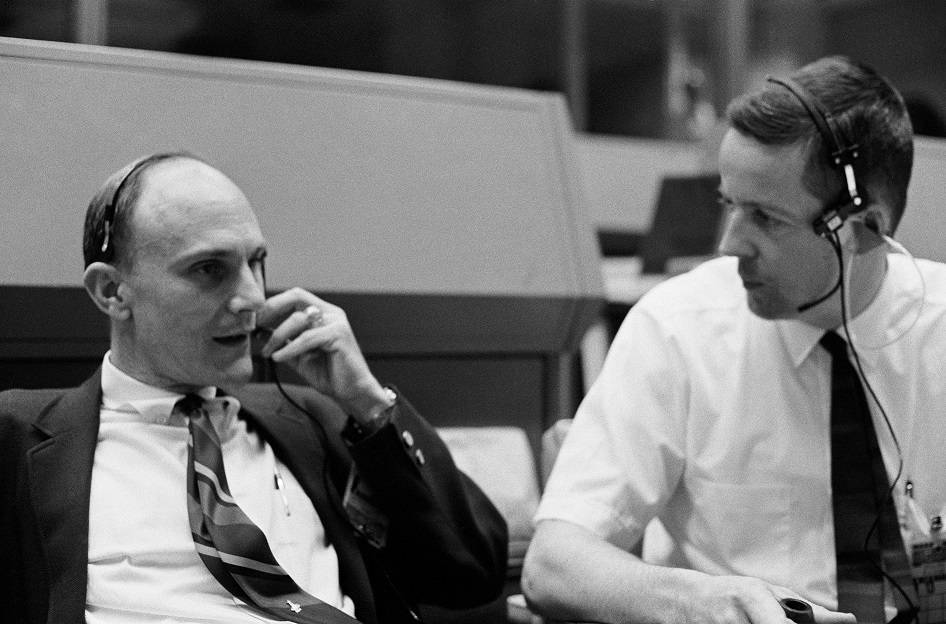
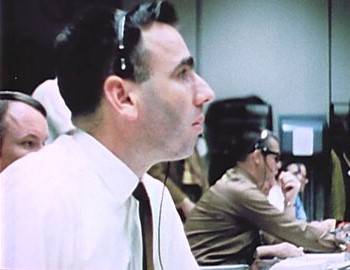
Left: Original Apollo 13 prime CMP Mattingly with Capcom Kerwin in MCC during the launch of Apollo 13. Right: Flight Director Windler in MCC during the launch of Apollo 13.
One hour and 48 minutes after liftoff, Kerwin called up to Apollo 13, “And you are Go for TLI,” and at 2 hours and 35 minutes, the S-IVB’s J-2 engine ignited for nearly 6 minutes to increase Apollo 13’s velocity to 24,247 miles per hour, fast enough to escape Earth’s gravity well and send the spacecraft and its crew toward the Moon. The next major event, the separation of the Command and Service Module (CSM) Odyssey from the S-IVB stage, took place about 25 minutes later, by which point Apollo 13 had reached an altitude of more than 4,300 miles. In a maneuver now familiar on lunar voyages, Swigert turned Odyssey around and slowly guided it to a docking with the Lunar Module (LM) Aquarius still attached to the top of the S-IVB. The crew provided excellent TV images of the maneuver to Mission Control and to viewers on the ground, causing Kerwin to comment, “We’ve got a groovy TV picture.” After the docking, the crew pressurized Aquarius before Swigert backed away from the third stage, extracting the LM in the process, and completing the Transposition and Docking maneuver. The S-IVB completed an 80-second evasive maneuver using its thrusters, but unlike previous missions where the spent third stage departed into solar orbit, Apollo 13 sent its stage on a trajectory to impact the Moon. The seismometer left behind by the Apollo 12 crew about 84 miles from the impact site picked up the resulting vibrations, lasting 3 hours and 20 minutes, providing scientists with clues about the Moon’s interior.
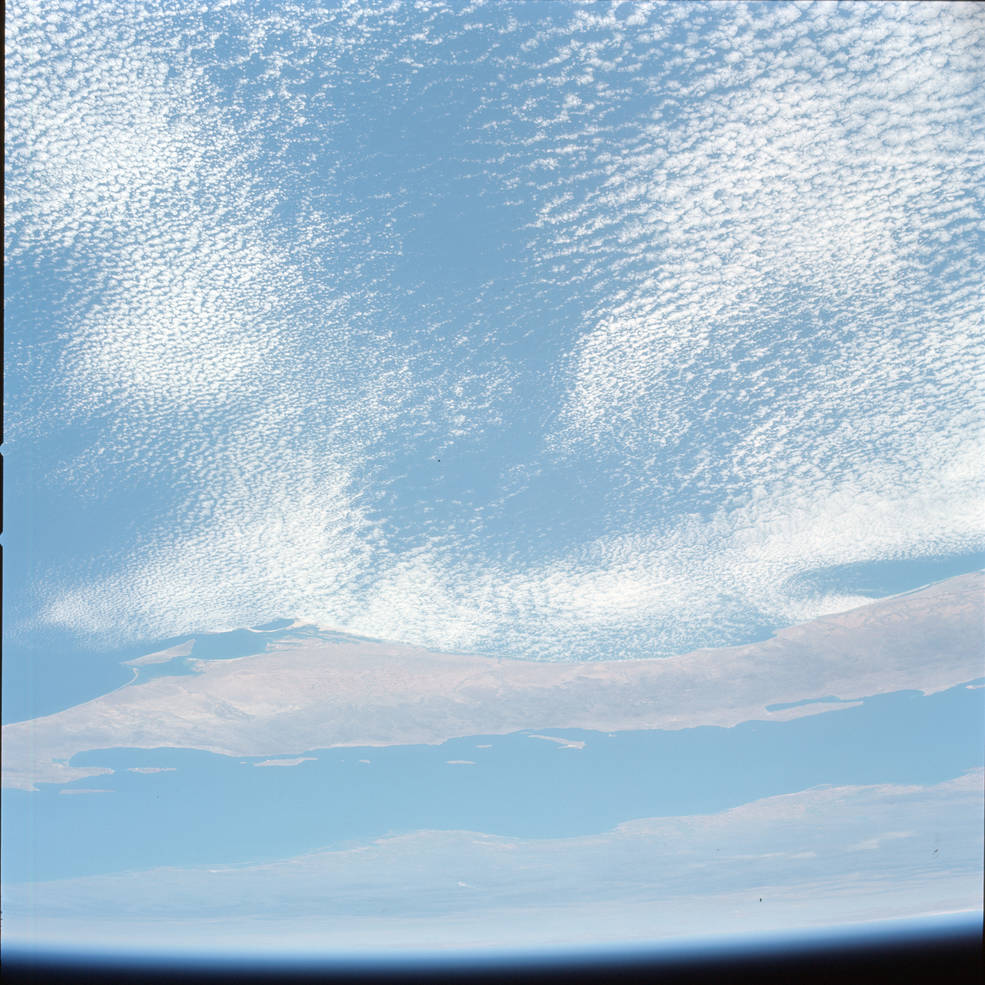
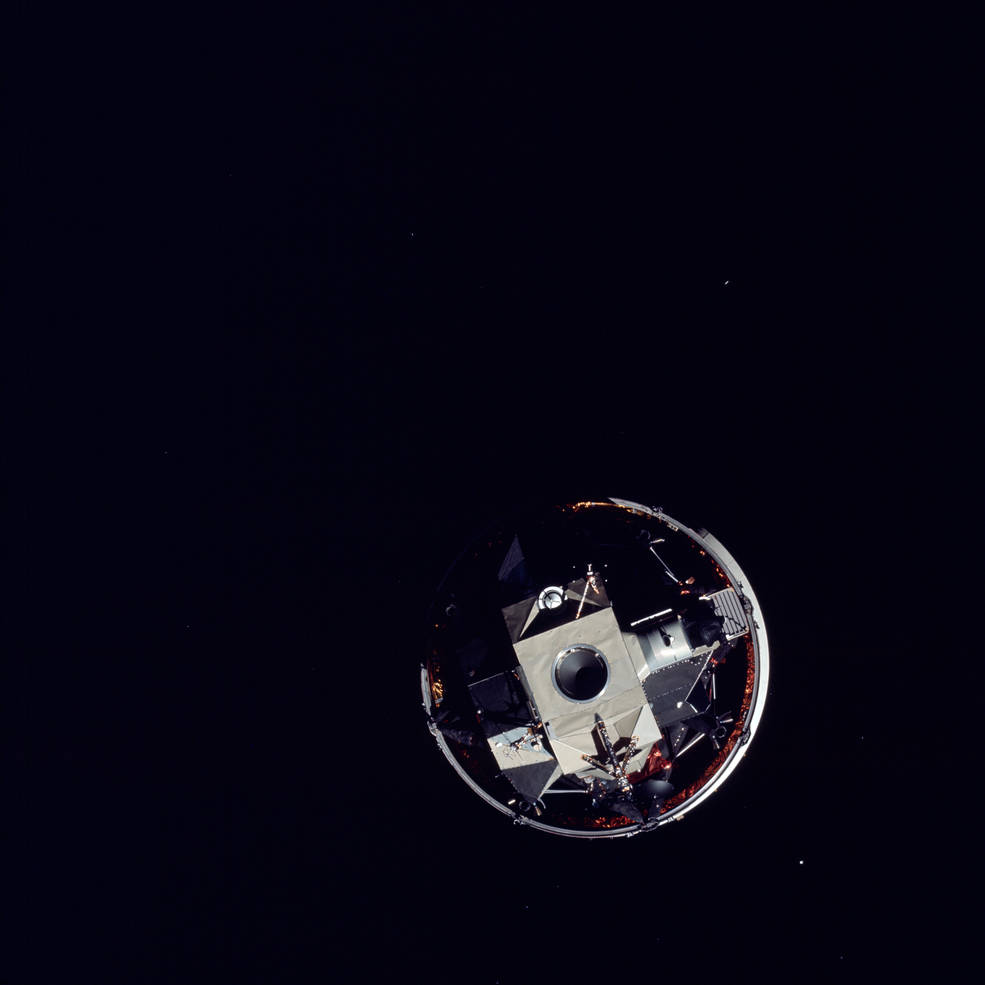
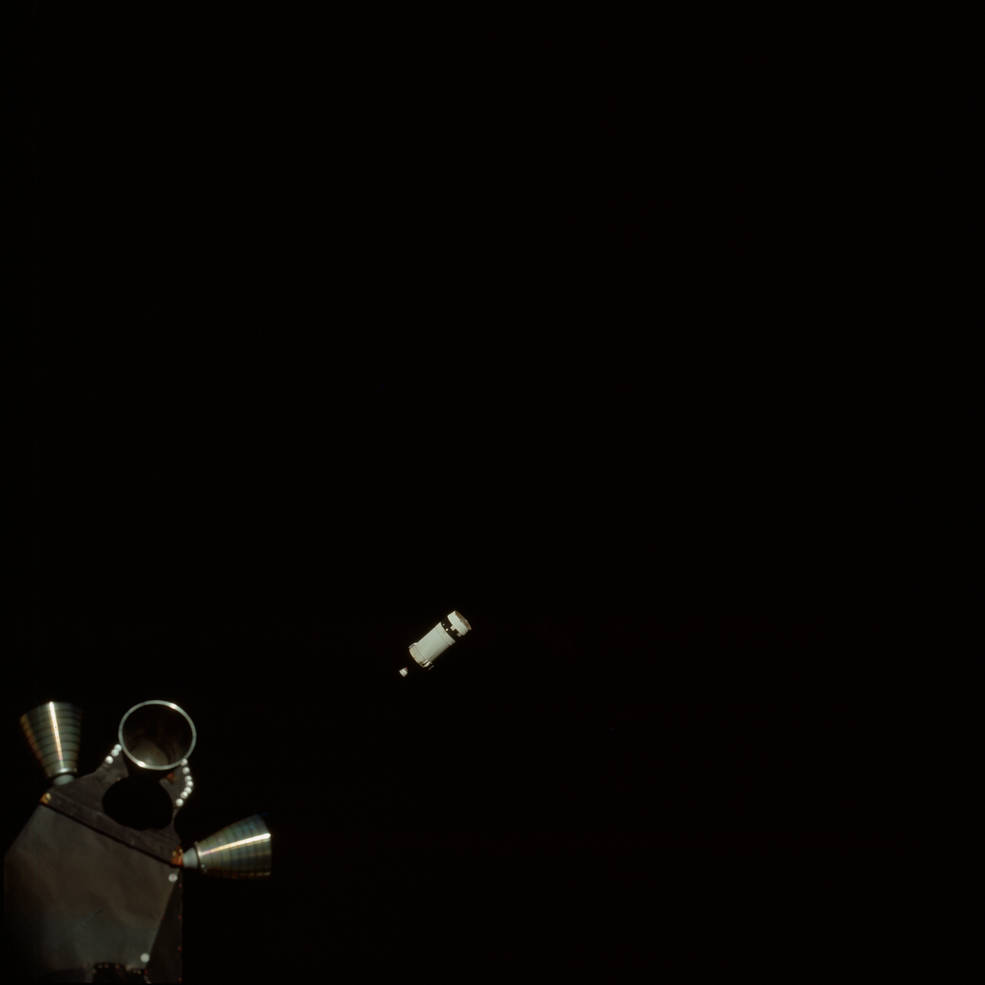
Left: View of Baja California taken during the Earth orbital phase of Apollo 13. Middle: LM Aquarius as seen from CM Odyssey during the transposition and docking maneuver. Right: The S-IVB third stage visible beyond the LM’s thrusters as it departs on its way to a planned crash landing on the Moon.
Apollo 13 had now reached an altitude of more than 14,000 miles, and its velocity had slowed to 11,300 miles per hour as Earth’s gravity continued its tug on the spacecraft. The crew placed the spacecraft into the Passive Thermal Control (PTC) or barbecue mode, a slow rotation designed to equalize temperature extremes. In Mission Control, the Gold Team of Flight Director Gerald D. “Gerry” Griffin came on shift, and astronaut Vance D. Brand replaced Kerwin as Capcom. Between seven and 11 hours into the flight, the astronauts took a series of 11 photographs of the receding Earth, at roughly 22-minute intervals, to image weather patterns on the home planet. During this time, they traveled from about 40,000 miles from the Earth to about 63,000 miles, their velocity decreasing under the continued pull of Earth’s gravity. Four of the photographs are shown below and all 11 have been spliced to make a video that shows the Earth’s rotation and the changing cloud patterns. The crew completed some housekeeping chores, ate dinner and settled in for their first night’s sleep in space. After a very long day, they had already reached a distance of nearly 73,000 miles from Earth.
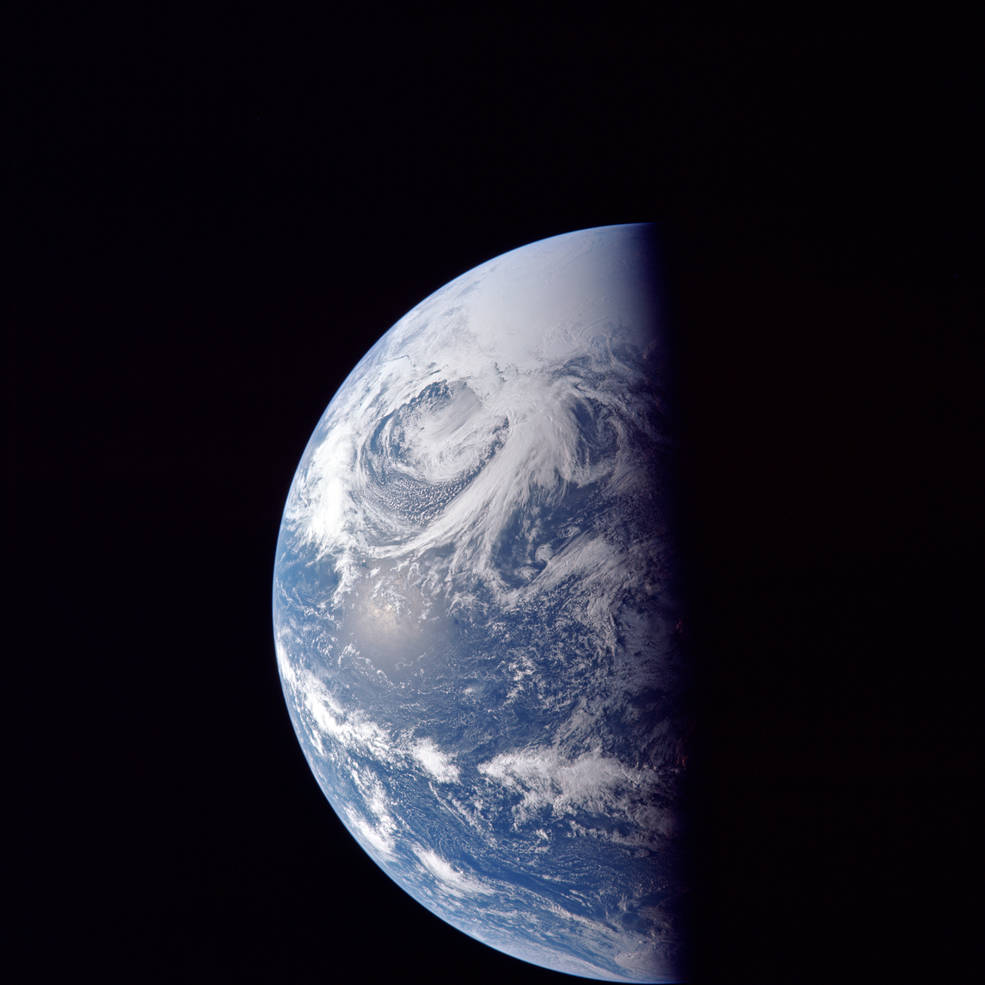
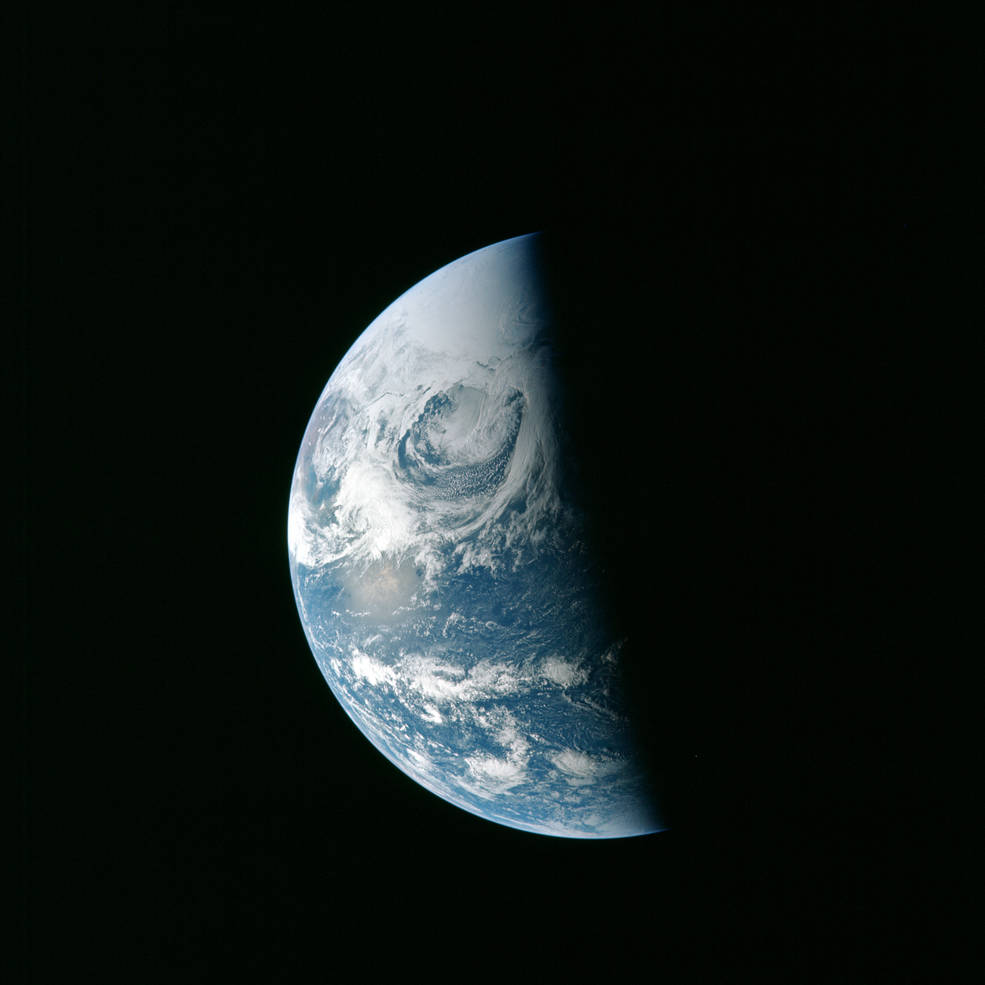

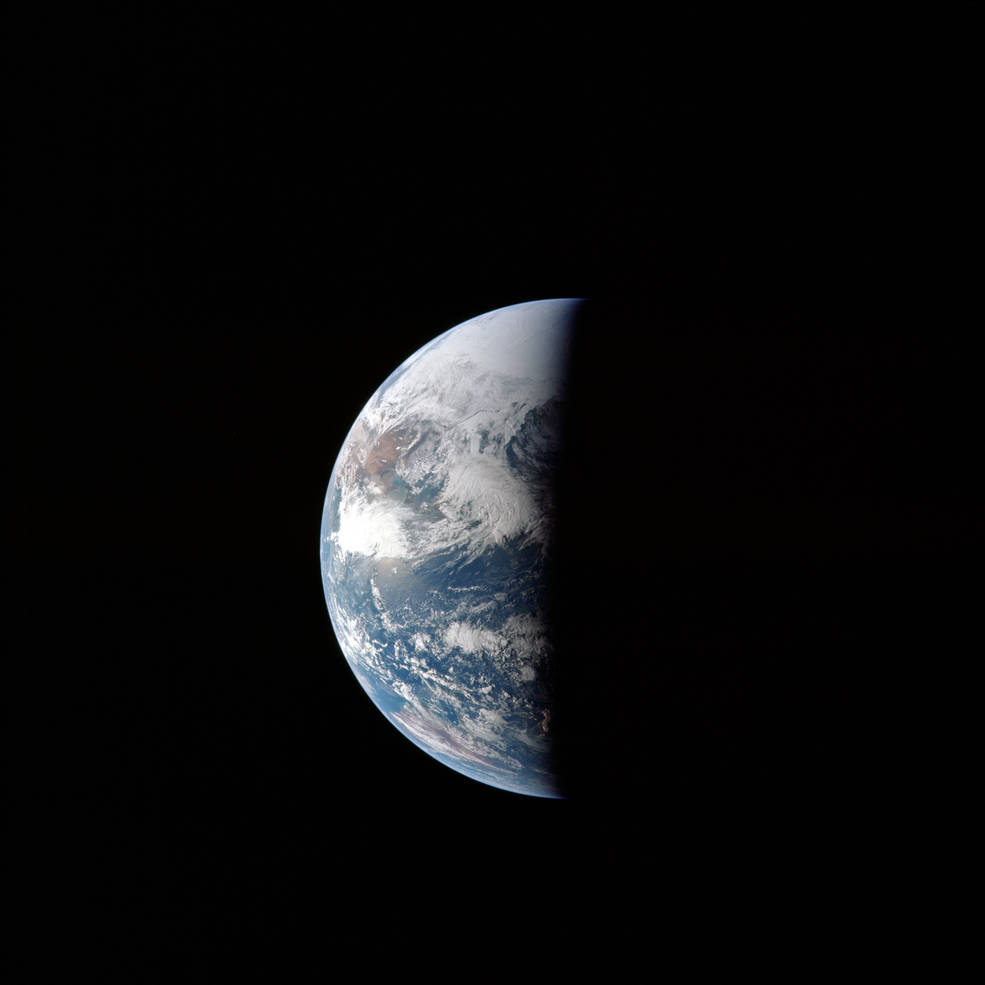
Four images of the receding Earth as seen from Apollo 13, from a series of 11 photographs taken during the mission’s first day in space.
While the astronauts enjoyed their 10-hour rest period, in Mission Control first Flight Director Eugene F. “Gene” Kranz’s White Team of controllers took their consoles with astronaut Jack R. Lousma as Capcom, followed by Glynn S. Lunney’s Black Team with Kerwin back as Capcom. By the time the crew awoke for their second day in space, Apollo 13 had reached a distance of 115,000 miles from Earth. As part of the daily news briefing to the crew, Kerwin reported on the breakup of The Beatles. And when reminding the astronauts that April 15, Income Tax Day, was approaching, Swigert sheepishly confessed that in the excitement of being added to the crew he had forgotten to file his taxes! At 27 hours 21 minutes, Apollo 13 passed the halfway point in distance between the Earth and the Moon. Other than routine navigation sightings and housekeeping, the primary task for this day involved a mid-course correction. The TLI precisely placed them into a so-called free-return trajectory, meaning that if for some reason the Service Module’s (SM) main engine failed to ignite to place them into lunar orbit, the spacecraft would loop around the Moon and head directly back to Earth without any major course corrections. But the free-return trajectory limited the areas that astronauts could visit on the lunar surface, and Apollo 13’s more scientifically interesting landing in the Fra Mauro highlands required a maneuver to leave the free-return path and enter into a so-called hybrid trajectory. That trajectory entailed a slightly higher risk should the SM engine fail, with the spacecraft missing Earth by about 40,000 miles, requiring a large course correction to assure a safe return. Just before the hybrid transfer mid-course correction maneuver, the astronauts turned on the TV camera and showed viewers an image of the growing Moon and then a spray of bright little stars as they conducted a water dump from the spacecraft, the water instantly freezing as it hit the vacuum of space. They completed the hybrid transfer maneuver, a 6-second firing of the SM’s Service Propulsion System (SPS) engine, without any issues and continued to send TV views of themselves inside the cabin. The burn reduced their closest approach point to the Moon from 290 to 69 miles. Late in the day, Haise called to Mission Control, “Are the flowers blooming yet?” prompting this response from Capcom Brand, “Gee, I haven’t seen any.” The coded exchange referred to Haise asking whether Mattingly had developed the German measles yet, and Brand confirming that so far the original Apollo 13 CMP remained healthy. Soon thereafter, the astronauts began their second rest period of the mission, at a distance of about 160,000 miles from the Earth.
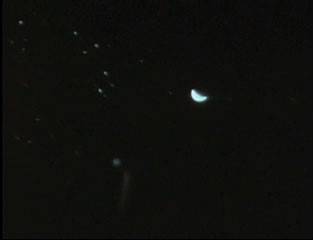
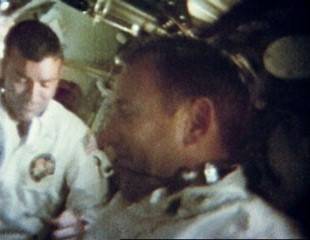
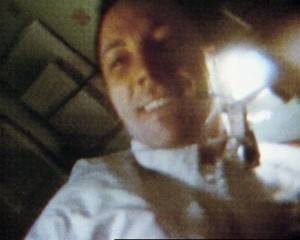
From the TV transmission on Flight Day 2. Left: The Moon and a water dump. Middle: Haise (left) and Lovell inside the CM Odyssey. Right: Swigert inside the CM Odyssey.
Lovell, Swigert and Haise awoke on the third day of their mission with Capcom Kerwin calling up that their “spacecraft is in real good shape as far as we’re concerned. We’re bored to tears down here.” The only minor concern raised was that the pressure sensor on the SM’s oxygen tank number 2 read off-scale high, but everyone assumed it was a sensor problem since the reading was normal earlier in the day until Swigert turned on the fan to stir the cryogenic oxygen. An attempt to restore the sensor by stirring the cryogenic oxygen in tank number 2 yielded no positive results, but controllers wanted to monitor it more closely and advised the crew to perform frequent stirs. Mission planners decided that since their trajectory was so precise a planned mid-course correction that day would not be needed, and instead the astronauts could move up their first familiarization of the LM Aquarius by three hours. After opening the hatch, first Haise then Lovell floated through the tunnel and into the LM. The astronauts broadcast their activities to the ground, taking viewers on a tour of Aquarius and Odyssey, with Haise demonstrating the drink bags inside their EMUs that were a new item on Apollo 13, providing hydration for the astronauts on the lunar surface. To wrap up the 49–minute broadcast, Lovell signed off with “And this is the crew of Apollo 13 wishing everybody there a nice evening, and we’re just about ready to close out our inspection of Aquarius and get back for a pleasant evening in Odyssey. Good night.” Lovell’s wife Marilyn, accompanied by Dr. Charles A. Berry, MSC’s Director of Medical Research and Operations, watched the broadcast from the Visitors Gallery in Mission Control. The three American TV networks apparently thought that flights to the Moon had become so routine that none carried the broadcast, instead offering viewers a baseball game, a rerun episode of I Love Lucy and The Dick Cavett Show.
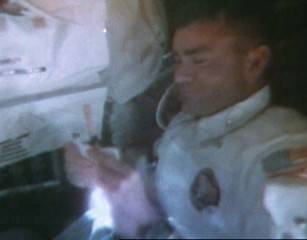
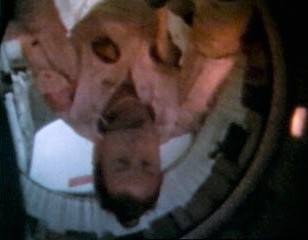
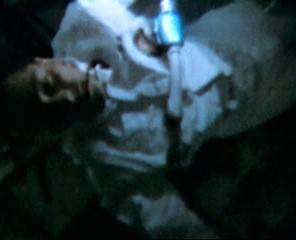
Scenes from the Flight Day 3 TV broadcast. Left: Haise in Aquarius demonstrating the in-suit drink bag. Middle: Lovell in the connecting tunnel. Right: Swigert in Odyssey.
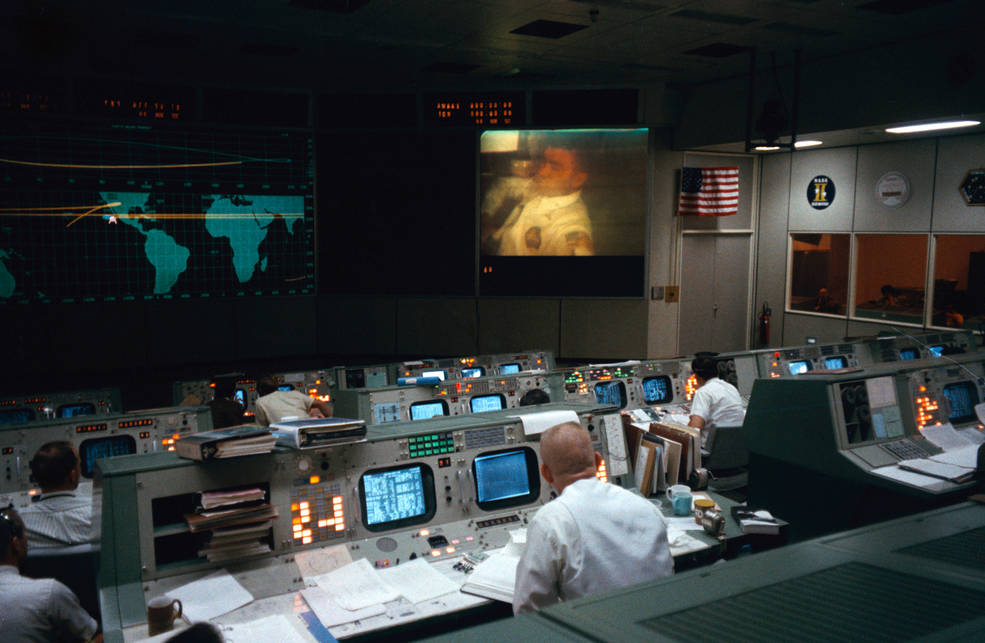
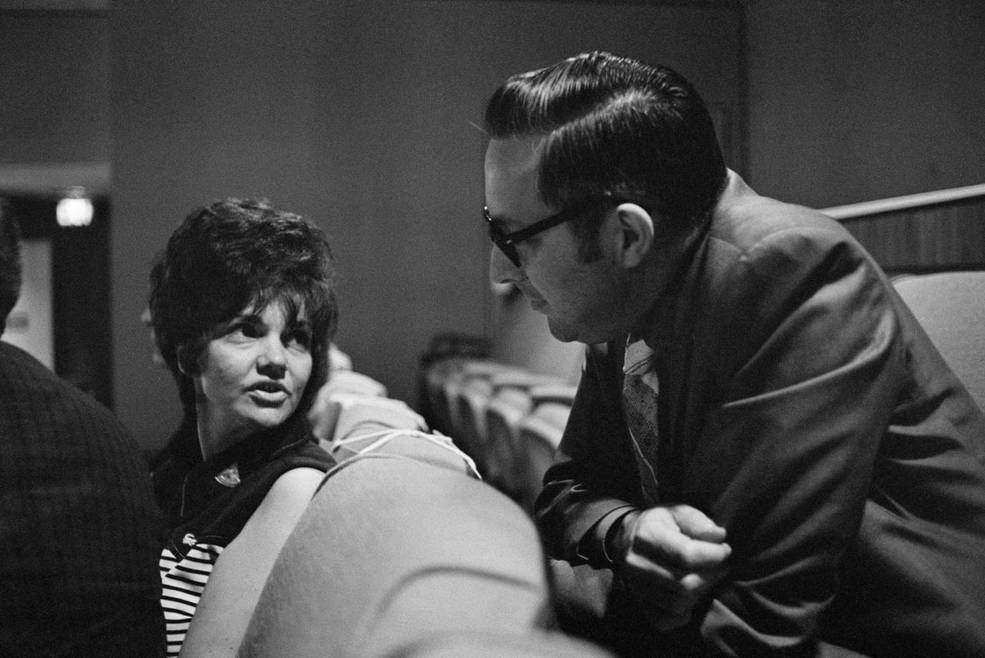
Left: Kranz (in foreground) watches the Flight Day 3 TV broadcast from Apollo 13. Right: Marilyn Lovell (at left) chats with Dr. Berry in the MCC Visitors Gallery during the Flight Day 3 TV broadcast.
Following the end of the broadcast, Capcom Lousma called to the crew with a few housekeeping chores including stirring the cryogenic liquids in both oxygen tanks and both hydrogen tanks in the SM to homogenize the fluids to enable more accurate quantity readings. Shortly after, at 55 hours and 55 minutes into the flight, Swigert called down, “Houston, we’ve had a problem here.”
To be continued…


























